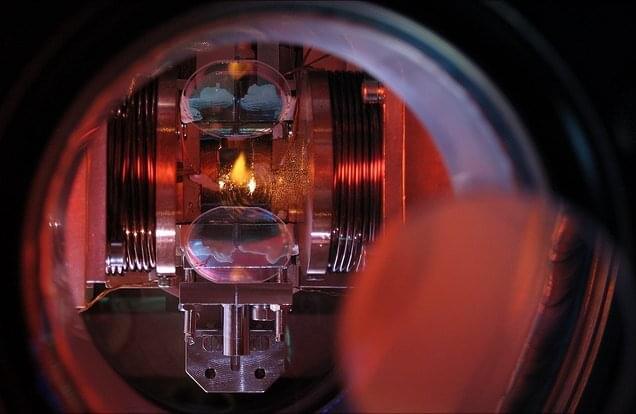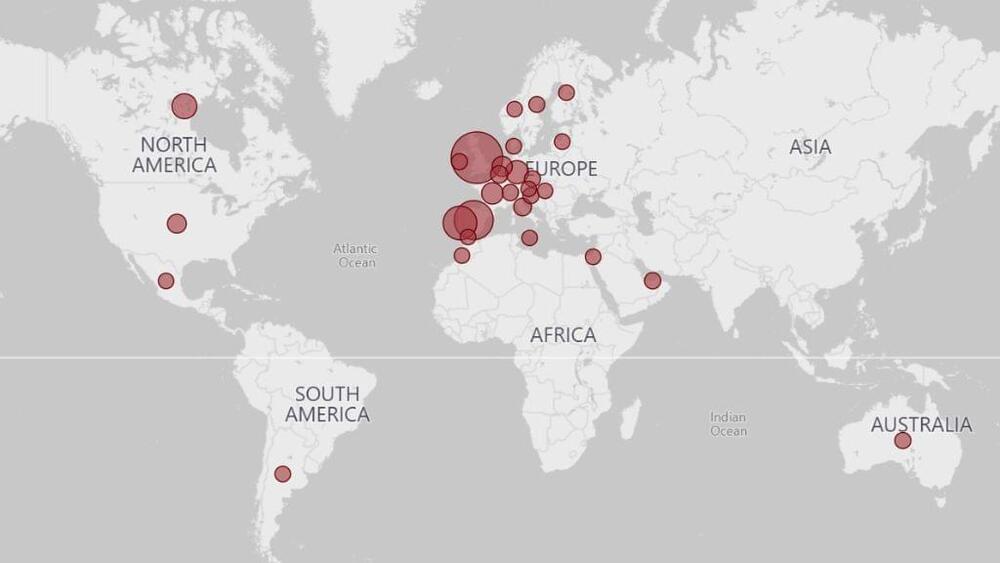Roswell Biotechnologies wants you to believe its new chip will revolutionize the detection of viruses, DNA, and more. But it still has to prove itself.






Researchers from the Institute of Laser Physics at Universität Hamburg have succeeded for the first time in realizing a time crystal that spontaneously breaks continuous time translation symmetry. They report their observation in a study published online by the journal Science on Thursday, 9 June, 2022.
The idea of a time crystal goes back to Nobel laureate Franck Wilczek, who first proposed the phenomenon. Similar to water spontaneously turning into ice around the freezing point, thereby breaking the translation symmetry of the system, the time translation symmetry in a dynamical many-body system spontaneously breaks when a time crystal is formed.
In recent years, researchers have already observed discrete or Floquet time crystals in periodically driven closed and open quantum systems. “In all previous experiments, however, the continuous-time translation symmetry is broken by a time-periodic drive,” says Dr. Hans Keßler from Prof. Andreas Hemmerich’s group at the Cluster of Excellence CUI: Advanced Imaging of Matter. “The challenge for us was to realize a system that spontaneously breaks the continuous time translation symmetry.”
Dutch company Lightyear has unveiled what it claims is the world’s first production-ready solar car. The Lightyear 0 is a family sedan with 5 sq m (53.8 sq ft) of solar panels built in, capable of generating up to 70 km (44 miles) of charge-free driving a day.
Having scaled its workforce up to 500 people and hooked up deals with more than 100 suppliers, Lightyear is deadly serious about this venture and ready to start manufacturing. Its first car is this four-door fastback electric sedan, with enough onboard battery to deliver a very solid 560 km (348 miles) of freeway driving at 110 km/h (68 mph), even without the sun shining.
That’s a pretty impressive number; in WLTP testing, the Lightyear 0 delivers 625 km (388 miles) of range, or nearly 4 percent more than Tesla’s Model 3 Long Range AWD. Lightyear says it’s developed the most efficient electric drivetrain ever, and that these range figures come from a battery pack holding just 60 kWh. For comparison, the Model 3 Long Range AWD is reported to run an 82-kWh pack.

Extremely interested to hear some of your opinions on this. Published in the journal Nature.
Scientists have discovered a new, mysterious particle. Of course, making new discoveries is exciting. But, perhaps the most exciting thing about this particle is that it could be a candidate for dark matter.
Incredibly, the never-before-seen particle was discovered using an experiment small enough to fit on a kitchen counter.
“When my student showed me the data I thought she must be wrong,” Boston College professor and lead researcher Kenneth Burch told Live Science. “It’s not every day you find a new particle sitting on your tabletop.”


The U.K. has reported more than 300 cases.
The U.S. Centers for Disease Control and Prevention (CDC) ramped up its alert level for the ongoing monkeypox outbreak as the nation’s case count hit 30 and the global case count rose above 1,000.
The CDC now advises that travelers “practice enhanced precautions” to avoid contracting and spreading the rare viral disease, the agency’s website states (opens in new tab). The CDC says that people should avoid close contact with sick people, including those with rashes on their skin or genitals, and with dead or live wild animals, especially rodents, such as rats and squirrels, and non-human primates, meaning monkeys and apes.

View insights.
A collection of 16 qubits has been organized in such a way that they may be able to operate any computation without error. It is an important step toward constructing quantum computers that outperform standard ones.
When completing any task, a quantum computer consisting of charged atoms can detect its own faults. Because conventional computers constantly detect and rectify their own flaws, quantum computers will need to do the same in order to fully outperform them. Nevertheless, quantum effects can cause errors to propagate rapidly through the qubits, or quantum bits, that comprise these devices.
Lukas Postler and his team from the Austria’s University of Innsbruck have created a quantum computer that can perform any calculation without error.